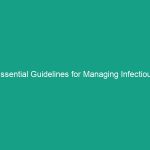Introduction
Good morning team,
Today, we’re diving into a critical topic that affects our daily work: Must-Know Guidelines for Taking Shortcuts: Avoid Critical Risks! In our fast-paced work Environment, it can be tempting to take shortcuts to save time, but these shortcuts often come with hidden dangers.
Understanding the risks associated with shortcuts is vital for maintaining a safe workplace. By the end of this Toolbox Talk, you’ll have the knowledge and practical strategies to avoid shortcuts that could lead to serious injuries or accidents.
Understanding Shortcuts and Their Impact on Workplace Safety
Taking shortcuts refers to the practice of bypassing established Safety protocols or Procedures to complete tasks more quickly. While it may seem harmless, this can significantly jeopardize Safety.
One common misconception is that shortcuts are always efficient. However, the reality is that they often lead to more significant problems, including accidents, injuries, and even potential legal ramifications for the company.
Every employee plays a crucial role in maintaining a safe work environment. Recognizing the importance of following protocols helps prevent unnecessary risks that could compromise our safety and productivity.
Key Hazards, Risks, and Safety Considerations
Let’s explore the specific Hazards and risks associated with taking shortcuts:
- Increased likelihood of accidents: Skipping Safety Measures can lead to falls, equipment malfunctions, or exposure to hazardous materials.
- Inadequate Training: Employees who take shortcuts may not be fully trained in proper procedures, increasing the risk of mistakes.
- Neglecting Safety Gear: Shortcuts often mean not using required Personal Protective Equipment (PPE), leading to severe injuries.
The real-world consequences of ignoring safety protocols can be dire. For instance, consider the case of an employee who decided to skip wearing a hard hat while working in a construction zone. This decision led to a head injury when a tool fell from above, resulting in a costly medical emergency and lost work time.
Best Practices, Procedures, & Actionable Advice
To minimize risks associated with shortcuts, here are some Best Practices to follow:
1. Always Follow Established Procedures
Each task has a set of safety protocols for a reason. Adhering to these procedures ensures that you and your colleagues stay safe. If you’re unsure about a procedure, don’t hesitate to ask a supervisor for clarification.
2. Evaluate the Situation
Before deciding to take a shortcut, ask yourself if it’s truly necessary. Could the time saved be worth the potential risks? Taking a moment to assess the situation can often reveal safer alternatives.
3. Communicate with Your Team
If you notice a colleague taking a shortcut, approach them respectfully. Discuss the potential risks involved and encourage them to follow safety protocols. Open lines of communication can foster a culture of safety.
4. Share Real-Life Examples
Sharing incidents where shortcuts led to accidents can help illustrate the importance of safety. For example, in a recent warehouse incident, an employee took a shortcut by not securing a load properly, which resulted in an injury when the load shifted unexpectedly.
5. Continuous Training
Regular safety training is essential. Participate actively in training sessions and refresh your knowledge often. This can help reinforce the importance of following safety protocols.
Regulations, Standards, and Compliance
Compliance with safety Regulations is not just a legal requirement; it protects everyone in the workplace. Familiarize yourself with relevant OSHA and company-specific safety Standards. Key regulations to keep in mind include:
- osha 1910: General industry standards that outline safety protocols.
- OSHA 1926: Safety standards specifically for construction sites.
Understanding these standards helps us recognize our responsibilities and the importance of maintaining a safe working environment. Remember, compliance is not optional; it’s a commitment to safety.
Employee Engagement & Discussion
Now, let’s open the floor for discussion. Here are a few questions to consider:
- What safety challenges have you encountered related to taking shortcuts?
- Can you share an experience where a shortcut led to a problem?
- How can we improve our safety protocols to discourage shortcuts?
Your input is invaluable in ensuring that we maintain a safe environment. Sharing experiences and solutions can help us learn from each other and avoid future incidents.
Conclusion & Key Takeaways
In conclusion, taking shortcuts may seem convenient, but it often leads to critical risks that can harm you and your colleagues. Remember the following key points:
- Always follow established safety procedures.
- Evaluate the necessity of shortcuts before making decisions.
- Communicate openly with your team about safety concerns.
- Stay informed about regulations and compliance standards.
- Participate in ongoing safety training.
By prioritizing safety and adhering to these guidelines, we can create a safer workplace for everyone. Thank you for your attention and commitment to safety. Let’s keep looking out for one another!


